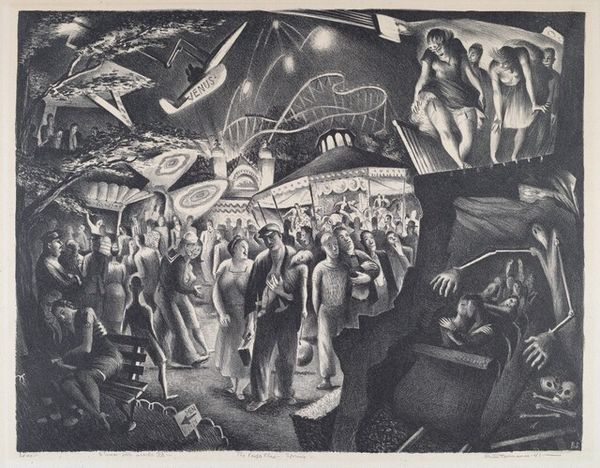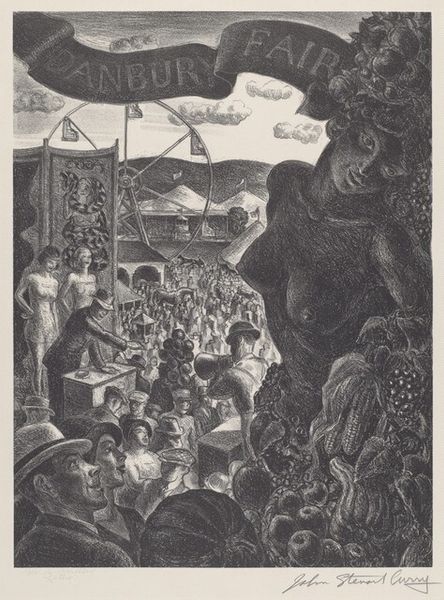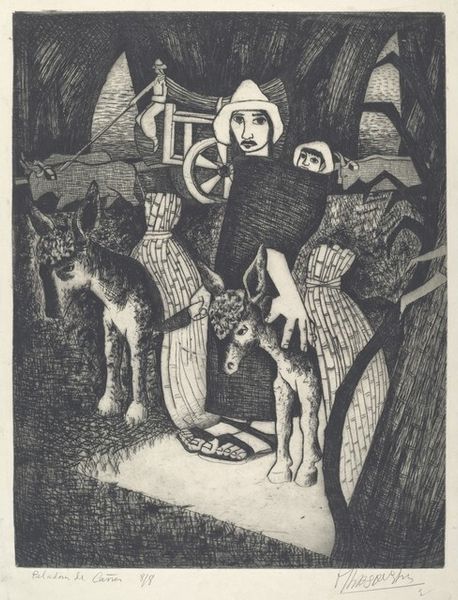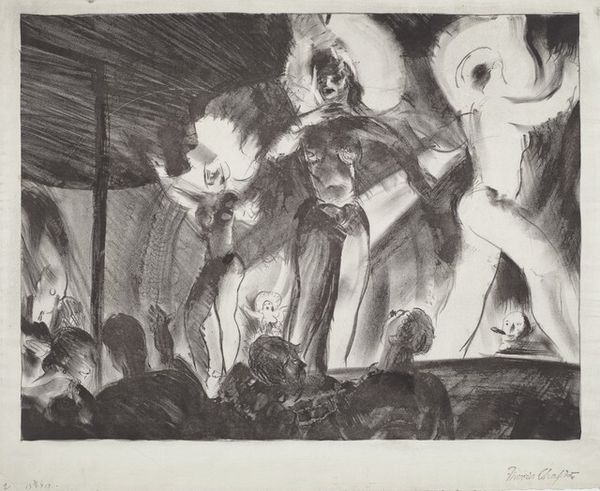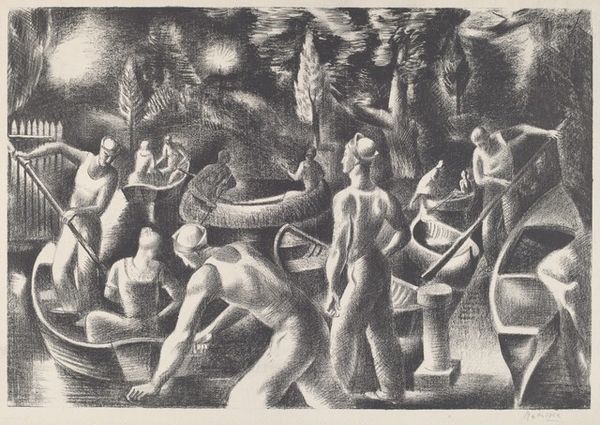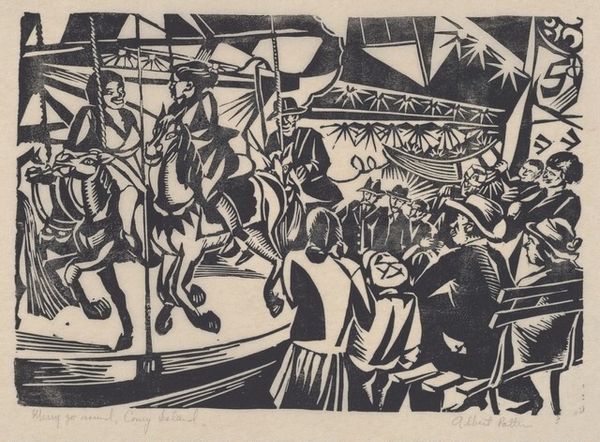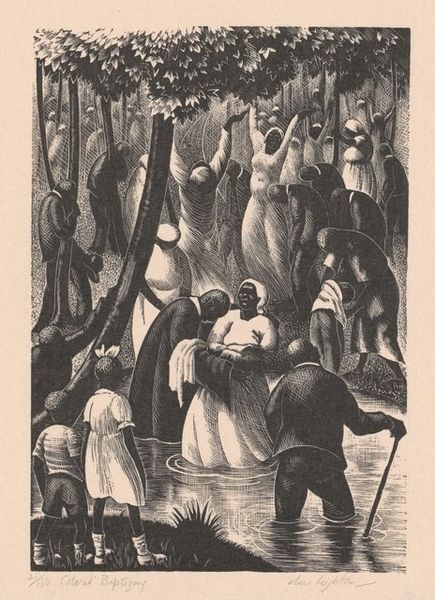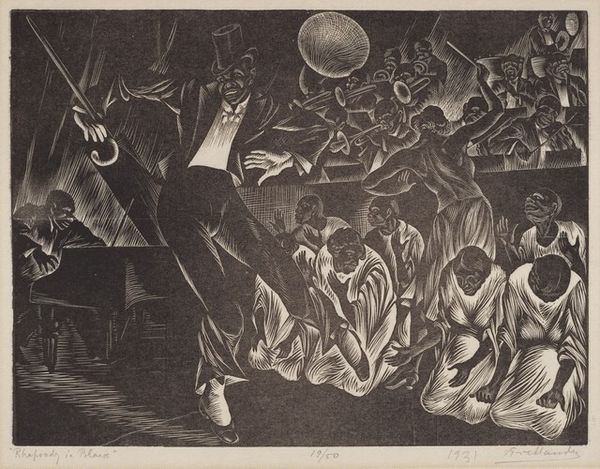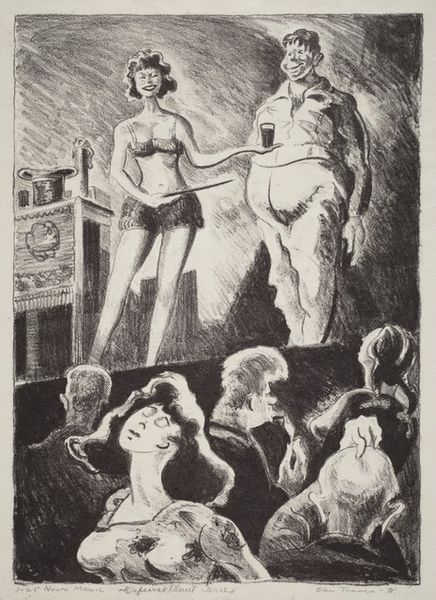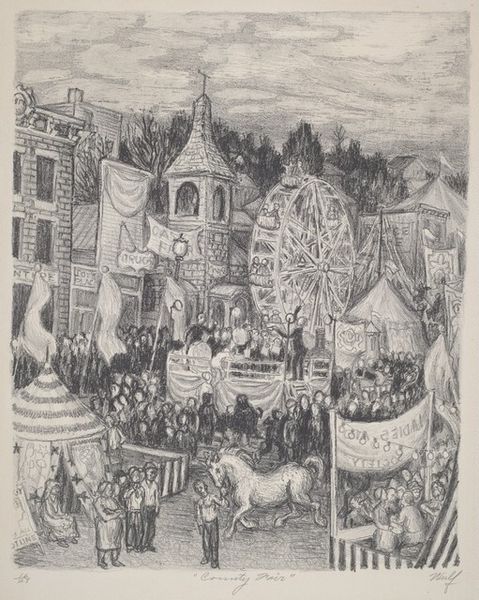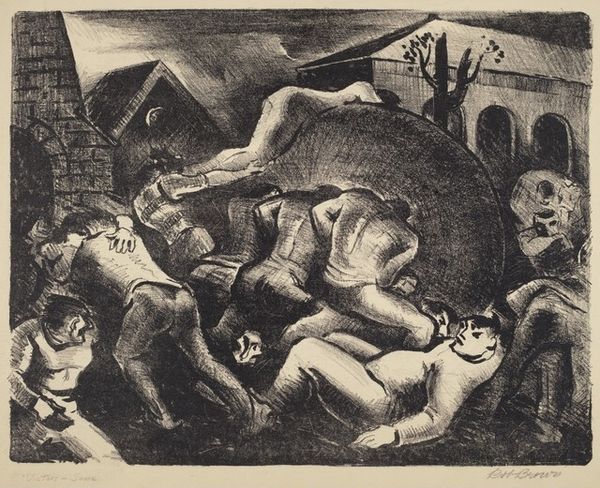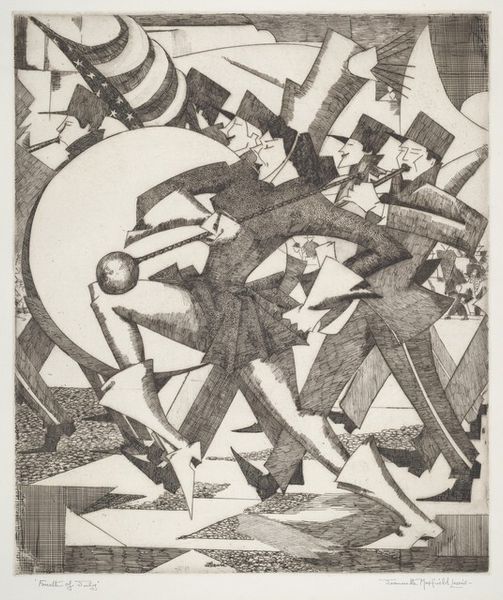
print, etching, graphite
# print
#
etching
#
graphite
#
cityscape
#
genre-painting
#
realism
Dimensions: image: 266 x 203 mm sheet: 407 x 330 mm
Copyright: National Gallery of Art: CC0 1.0
Editor: This is Isac Friedlander's "Coney Island" from 1932, a graphite etching. The details are incredible; it has a kind of muted energy. The density of the marks, particularly in the foreground, really captures a crowd. What stands out to you most in terms of its composition? Curator: I am particularly drawn to the relationship between the foreground and background. Friedlander masterfully uses the etching technique to create a sense of depth and contrast. The dense, almost chaotic, foreground gives way to the architectural, geometric forms of the amusement park rides, creating a compelling tension. Notice how the lines vary in thickness, adding dynamism. Editor: The etching creates an almost vibrating texture, especially around the figures. The formal quality is remarkable considering the realism Friedlander was going for. Can you explain how the use of light contributes to the overall effect? Curator: Absolutely. The interplay of light and shadow is critical. The etching allows for a delicate rendering of light, emphasizing the artificial illumination of Coney Island at night. Observe how light articulates form but also flattens certain areas, calling attention to the picture plane and emphasizing the two-dimensionality of the print. It enhances the liveliness and excitement inherent to Coney Island's visual character. Editor: It’s interesting how the structural elements almost compete with the representational elements, as they play with light, dark and shape in really interesting ways. Thank you for that close look. Curator: It has been my pleasure; understanding the interplay between technique, composition, and form illuminates the aesthetic significance of Friedlander's work, revealing new layers each time we look.
Comments
No comments
Be the first to comment and join the conversation on the ultimate creative platform.
